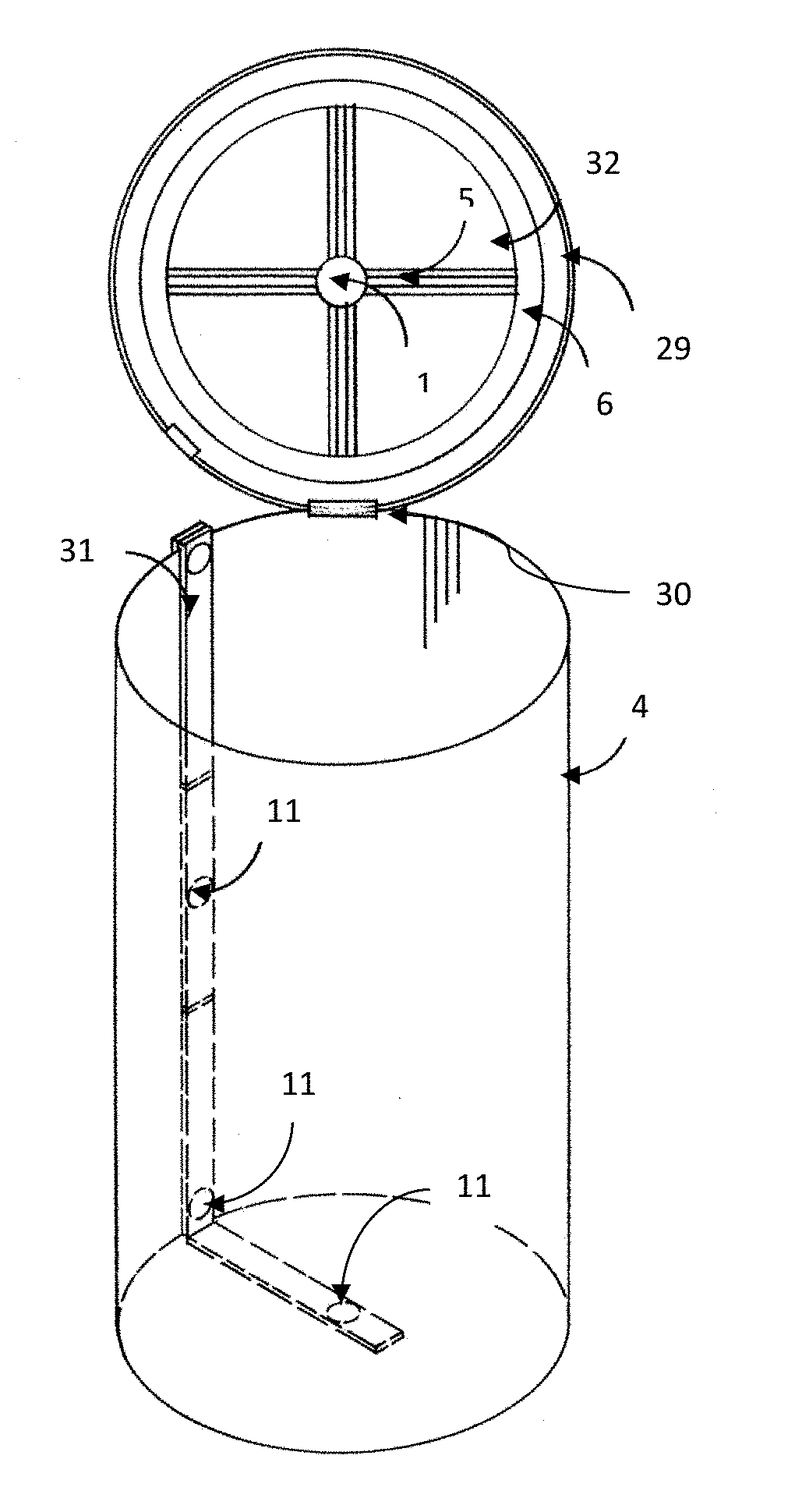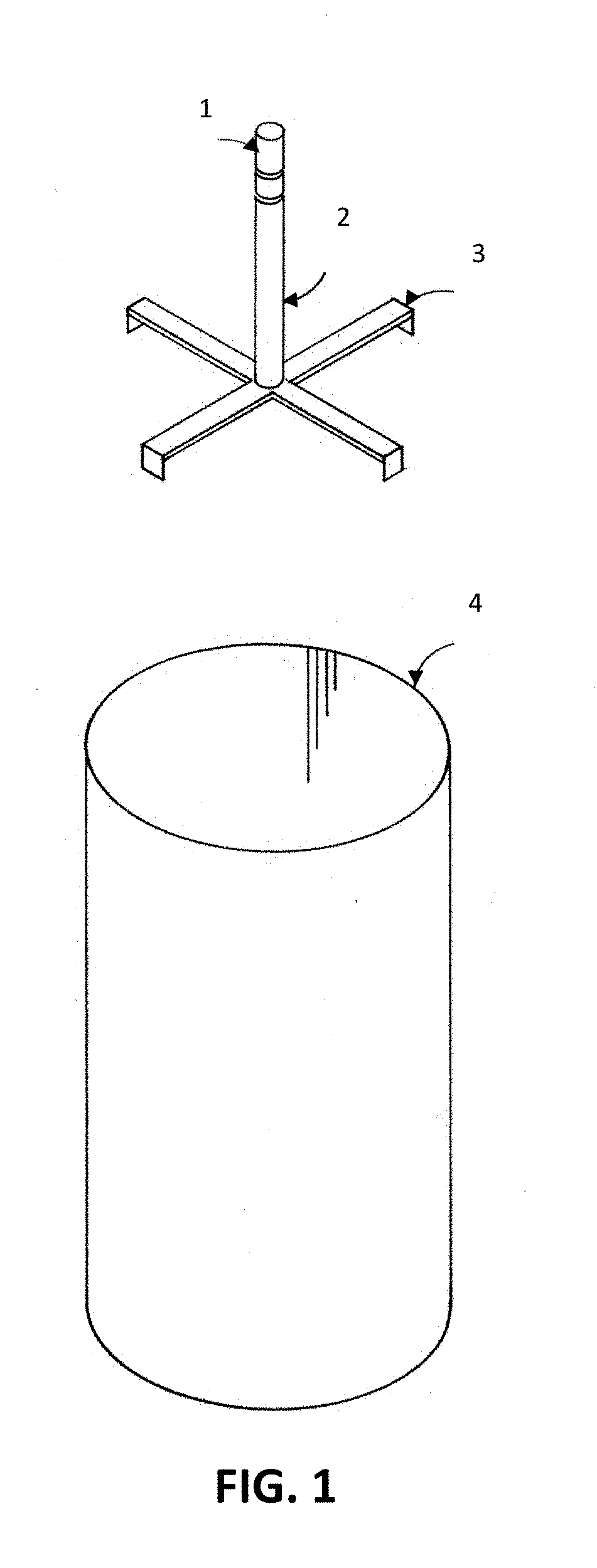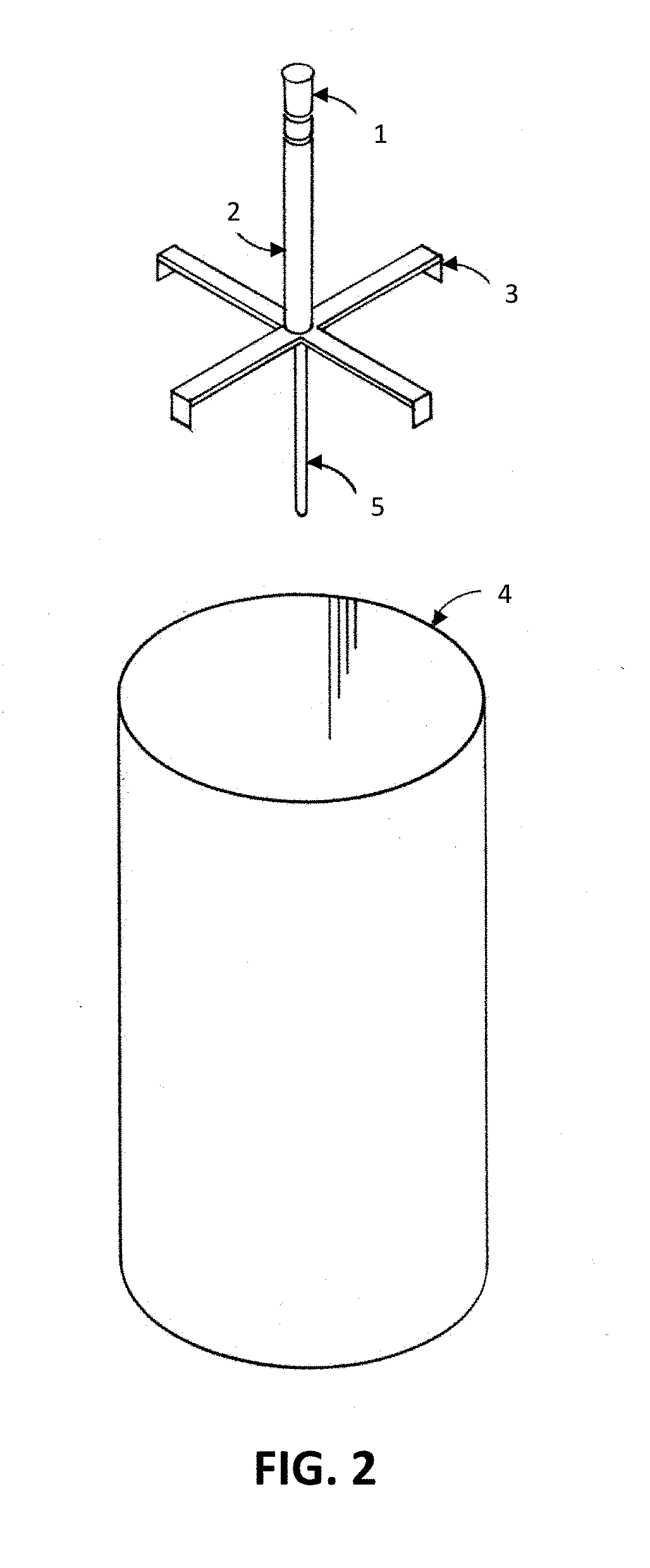UV Sterilization Of Container, Room, Space Or Defined Environment
a technology of uv disinfection and container, applied in the direction of disinfection, lavatory sanitory, ict adaptation, etc., can solve the problems of inability to reproduce microorganisms, inability to use large amounts of water as a solvent for both solutions, and unstable gas of ozon
- Summary
- Abstract
- Description
- Claims
- Application Information
AI Technical Summary
Benefits of technology
Problems solved by technology
Method used
Image
Examples
example 1
[0866]i. Inoculation of a Container
[0867]The following is an exemplary method for assessing microbial concentration in a tank after UV disinfection according to a method described herein and after using the standard sodium hydroxide and citric acid procedure or hypochlorite and citric acid (Emmanuel et al., 2004, Environmental International, 30(7): 891-900).
[0868]Four tanks (wine fermentation vessels; stainless steel) are provided. Two tanks have a 36″ radius and two tanks have a 60″ radius and a height of 120″. The tanks are pressure washed with water and inoculated with spoilage yeast, cultured yeast, and pathogenic microorganisms (see Table 8).
TABLE 8Exemplary Inoculating Containers (Tanks) With MicroorganismSpoilage YeastCultured YeastPathogenic MicroorganismsBrettanomyces abstinensSaccharomycesSalmonella sppBrettanomyces custersianusYersinia enterocolitica andBrettanomyces intermediusVibrio cholerae O1Brettanomyces lambicusVibrio cholerae non-O1and other ...
example 2
ng Killing of Microorganisms
[0889]The following provides the steps to calculate the time needed to kill a desired microorganism using compositions and methods of the present invention. The required Energy Dosage of UV Radiation (UV Dose) in μWs / cm2 needed for kill factor is provided herein in Tables 1-5. To determine the intensity of UV on a surface at various distances from a germicidal UV lamp one divides the radiant energy (shown in microwatts per square centimeter at one meter) by the intensity factor as shown in the Table 9 below.
TABLE 9Intensity Factor (American Ultraviolet Company , Lebanon, IN 46052, USADistance from 2″3″4″ 6″8″10″12″14″18″24″UV LampIntensity Factor32.322.818.612.99.857.946.485.353.62.33Distance from 36″39.37″48″60″80″100″120″UV Lamp(1 meter)Intensity Factor1.221.00.6810.45202560.1690.115
[0890]Using a UV lamp with an output of 190 microwatts / cm2 at 254 nm (at a distance of 1 meter), placed within a fermentation vessel 36″ from the interior surface, the foll...
example 4
ion of a Room
[0901]The following provides an exemplary procedure for UV sterilization of a room, in particular, an operating room, a clean room (ISO 1-9), a nursing home, or a kitchen (commercial or residential). The UV device for sanitizing the room will be fixed to the ceiling of, for example, a 20 ft by 20 ft room. The UV device is allowed to determine the dimensions of the room and program a sanitization cycle. The room has all of the standard equipment and features of an operating room (OR), a clean room (ISO 1-9), a nursing home, or a kitchen (commercial or residential). Radiometers and plates pre inoculated with pathogenic microorganisms (such as but not limited to: Streptococcus and Pseudomonas, and foodborne bacteria such as Shigella, Campylobacter, and Salmonella) are placed throughout the room at varying distances from the UV device to determine the UV-C intensity level attained in addition to the log reduction of microorganisms. Furthermore, swab tests are taken at those...
PUM
| Property | Measurement | Unit |
|---|---|---|
| wavelength | aaaaa | aaaaa |
| angle | aaaaa | aaaaa |
| angle | aaaaa | aaaaa |
Abstract
Description
Claims
Application Information
 Login to View More
Login to View More - R&D
- Intellectual Property
- Life Sciences
- Materials
- Tech Scout
- Unparalleled Data Quality
- Higher Quality Content
- 60% Fewer Hallucinations
Browse by: Latest US Patents, China's latest patents, Technical Efficacy Thesaurus, Application Domain, Technology Topic, Popular Technical Reports.
© 2025 PatSnap. All rights reserved.Legal|Privacy policy|Modern Slavery Act Transparency Statement|Sitemap|About US| Contact US: help@patsnap.com



